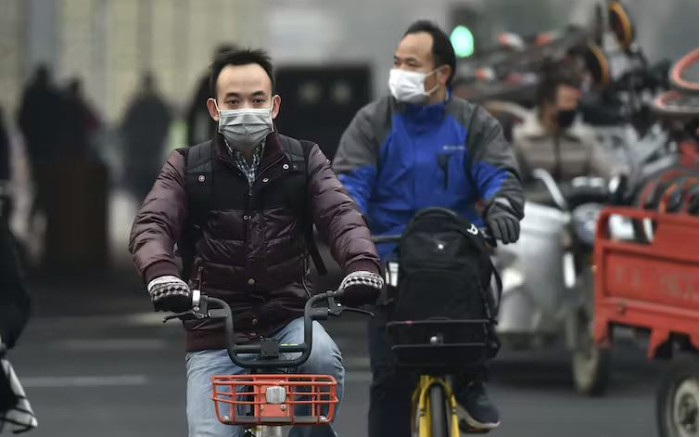
Beijing’s National Health Commission (NHC) told reporters last week that the rise in respiratory illnesses was due to the lifting of Covid-19 restrictions and the spread of known pathogens, including influenza and common bacterial infections that affect children.
Emissions from China’s transportation and residential sectors have not changed significantly/The Conversation
BEIJING – The World Health Organization has asked China for more data on a respiratory illness spreading in the north of the country and urged Chinese people to take measures to reduce the risk of infection.
According to the WHO, northern China has reported an increase in “influenza-like illnesses” since mid-October compared to the same period in the previous three years.
“The WHO has formally asked China for detailed information on the increase in respiratory illnesses and reported clusters of pneumonia in children,” the UN health agency said in a statement on Wednesday.
Beijing’s National Health Commission (NHC) told reporters last week that the rise in respiratory illnesses was due to the lifting of Covid-19 restrictions and the spread of known pathogens, including influenza and common bacterial infections that affect children.
China’s capital has “entered a high-incidence season for respiratory infections,” Wang Quanyi, deputy director and senior epidemiological expert at the Beijing Center for Disease Control and Prevention, told the state-run Beijing News newspaper on Wednesday.
Beijing “is currently showing a trend of multiple pathogens coexisting,” he added.
On November 21, the media and the public disease surveillance system ProMED reported clusters of undiagnosed pneumonia among children in northern China.
The WHO said it was unclear whether the ProMED report was related to the authorities’ press conference and that it sought clarification.
The agency “has also requested additional information on recent trends in the spread of known pathogens, including influenza, SARS-CoV-2 (the virus that causes Covid-19), RSV in infants and Mycoplasma pneumoniae, as well as…” levels of overcrowding of the health system,” the statement continued.
Meanwhile, people were urged to take preventative measures, including vaccinations, keeping distance from those who are sick and wearing masks.
The Chinese capital is currently experiencing a cold snap, with temperatures expected to fall well below zero by Friday, state media said.
The WHO did not provide any information about China’s response to a request for more information.
The Chinese Foreign Ministry did not respond to a request for comment from the AFP news agency on Thursday.
DEMAND TRANSPARENCY
During the course of the Covid-19 pandemic, the WHO repeatedly criticized the Chinese authorities’ lack of transparency and cooperation.
More than three years after cases were first discovered in Wuhan, a heated debate still rages over the origins of Covid-19.
Scientists agree between two main theories about the cause: an escape from a lab in the city where such viruses were being studied, and an intermediary animal that infected people at a local market.
Earlier this year, WHO experts said they were sure Beijing had far more data that could shed light on the origins of Covid, calling it a moral imperative to share that information.
A team of specialists led by the WHO and accompanied by Chinese colleagues surveyed China in early 2021, but no team has been able to return since then and WHO officials have repeatedly asked for additional data.
WHO chief Tedros Adhanom Ghebreyesus emphasized that solving the mystery could help avert future pandemics.






Recent Comments